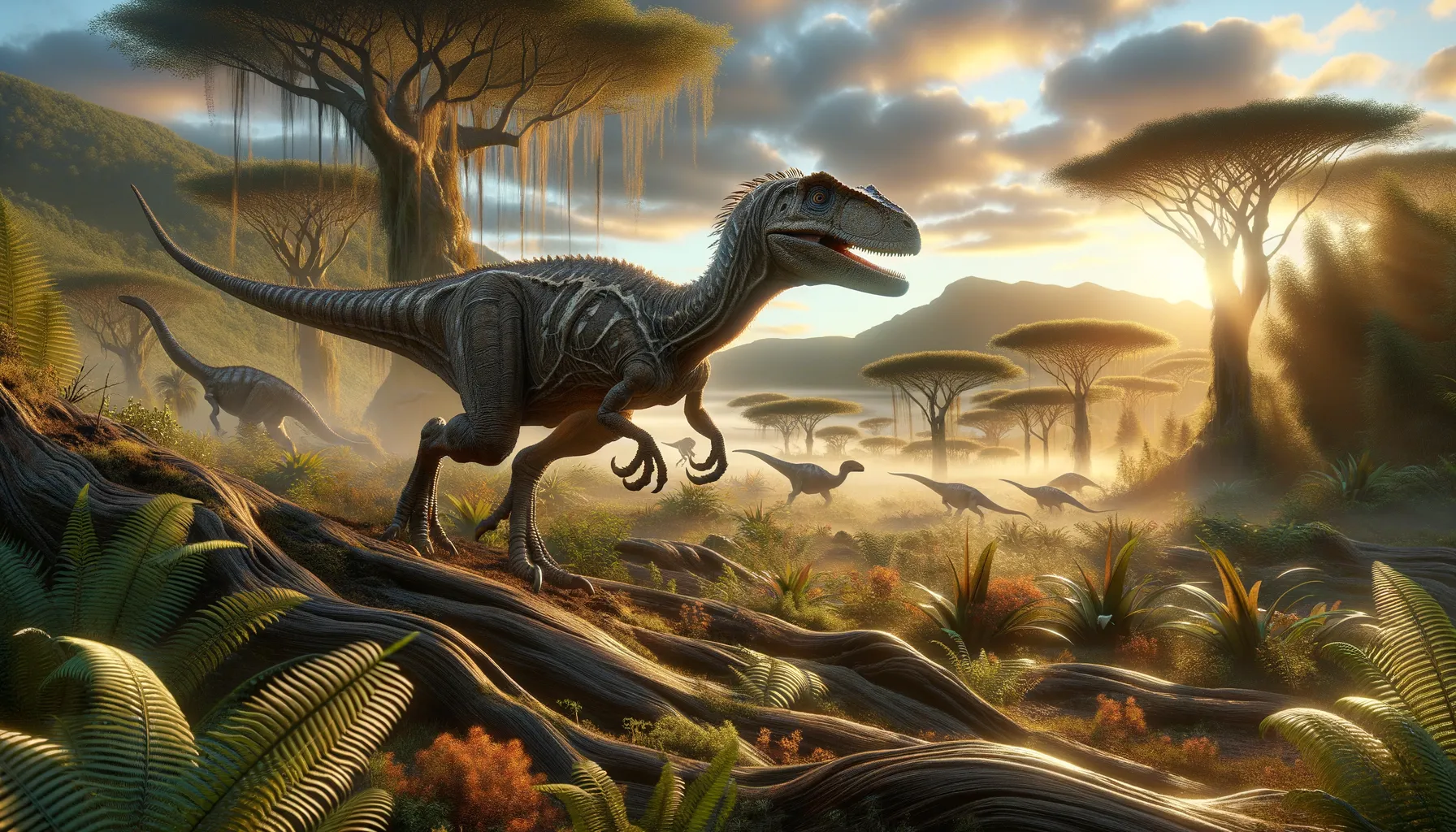
Silesaurus
An agile pioneer of dinosaur evolution.
Period
Triassic
Length
Roughly 2.3 meters long.
Height
Approximately 1 meter tall.
Weight
Around 15 kilograms.
Silesaurus was an early dinosauriform that roamed parts of Europe during the Late Triassic period, roughly 230 million years ago. Its relatively small size and agile build suggest it was a herbivore or omnivore. Silesaurus is significant for understanding the evolution of early dinosaurs. It provides insight into the transition between non-dinosaurian archosaurs and true dinosaurs, embodying characteristics that are pivotal to this evolutionary phase.
Diet
Silesaurus was likely an omnivore, feeding on a mix of plants and small animals or insects. Its teeth and jaw structure suggest it could have eaten both plant material and animal protein, though it might have leaned more toward herbivory.
Hunting
Though possibly not a hunter in the traditional sense, Silesaurus might have foraged for insects and small invertebrates. With its agile body, it could navigate its environment efficiently to find food resources that were not well-defended.
Environmental challenges
Living during the Triassic period, Silesaurus faced changing climates with dry and wet seasons. Competition for food would have been fierce, especially with evolving plant species and emerging predator dynamics. Adaptations for survival might include dietary flexibility to manage scarcity of preferred resources.
Speed
Moderately fast for its size.
Lifespan
Exact lifespan unknown, likely several years.
First discovery
Discovered in 2003 in Poland.
Fun Facts
- Silesaurus wasn't actually a dinosaur but a close relative that lived around 230 million years ago.
- Despite its dinosaur-like appearance, Silesaurus was small, about as tall as a large dog.
- It was primarily herbivorous, which is unique among early dinosaur relatives of its time.
- Silesaurus had a beak-like structure that helped it crop vegetation efficiently.
- The first fossils of Silesaurus were discovered in Poland in the early 2000s.
- Silesaurus means 'Silesian lizard', named after the region Silesia where it was found in Poland.
- Silesaurus plays a crucial role in understanding the early evolution of dinosaurs and their relatives.
Growth and Development
Silesaurus likely grew slowly over several years, reaching full adult size around early adulthood. The development process probably involved stretching its limbs and robust body to maintain balance and speed in response to environmental demands. Its growth could have depended on the availability of nutrients in its habitat.
Habitat
Silesaurus inhabited semi-arid environments with seasonal variations, which likely influenced its foraging patterns. Forested areas with plenty of undergrowth would have provided both food and protection from harsher elements. Water sources would have been crucial for survival, dictating its range and territory.
Interaction with other species
Silesaurus may have co-existed with early theropods and other archosaurs, competition facilitating niche partitioning. Its small size suggests it might have avoided large direct confrontations, relying on speed and agility to escape threats. Potential commensal relationships or avoidance behavior would have played a role in its survival strategy.
Natural lifespan
Silesaurus's natural lifespan remains uncertain, though it likely lived several years.
Reproduction
Reproductive behavior remains speculative, but it likely laid eggs like modern reptiles. Parental care, if any, might have been minimal, with hatchlings being relatively self-sufficient. The species perhaps relied on producing multiple offspring to ensure survival amidst predation.
Social behaviour
Silesaurus was likely solitary or lived in small groups, based on fossil site evidence. Without clear evidence of social hierarchy, interactions would largely focus on reproduction and territorial disputes. Communication might have been limited to visual and possibly vocal displays.
Fossil locations
Fossils of Silesaurus have been primarily discovered in Poland. These findings have provided critical data on early dinosauriform evolution. The well-preserved remains help researchers piece together the anatomy and potential behaviors of these prehistoric creatures.
